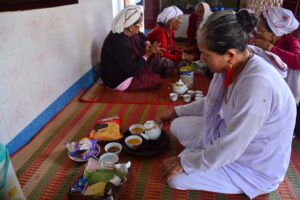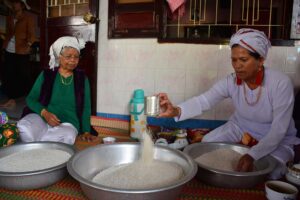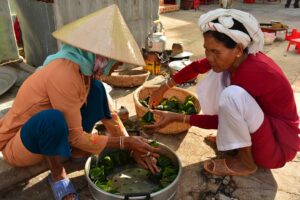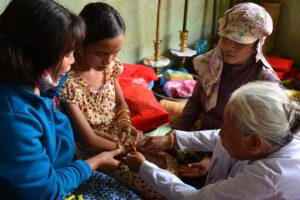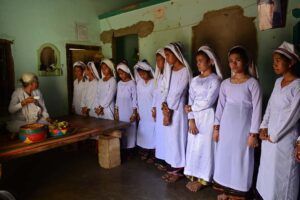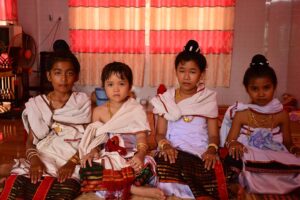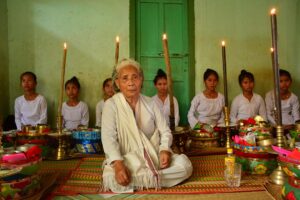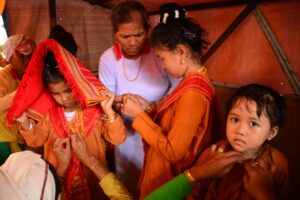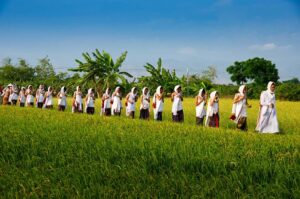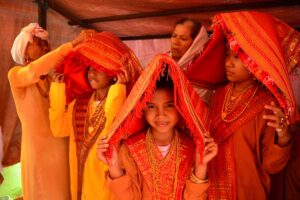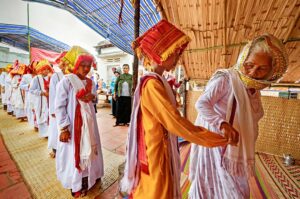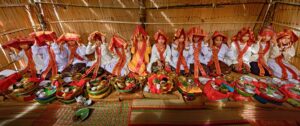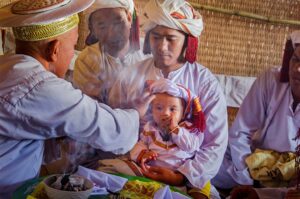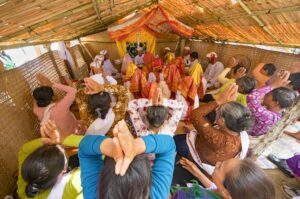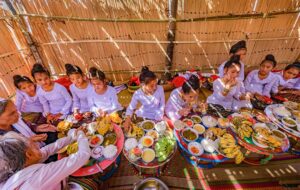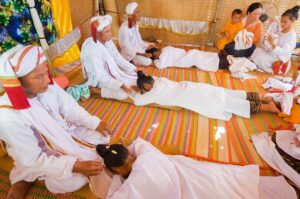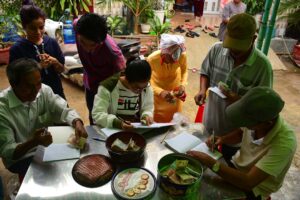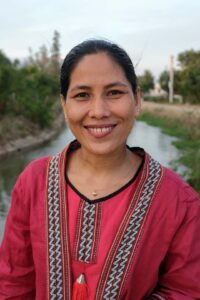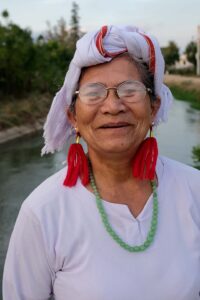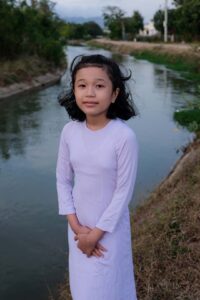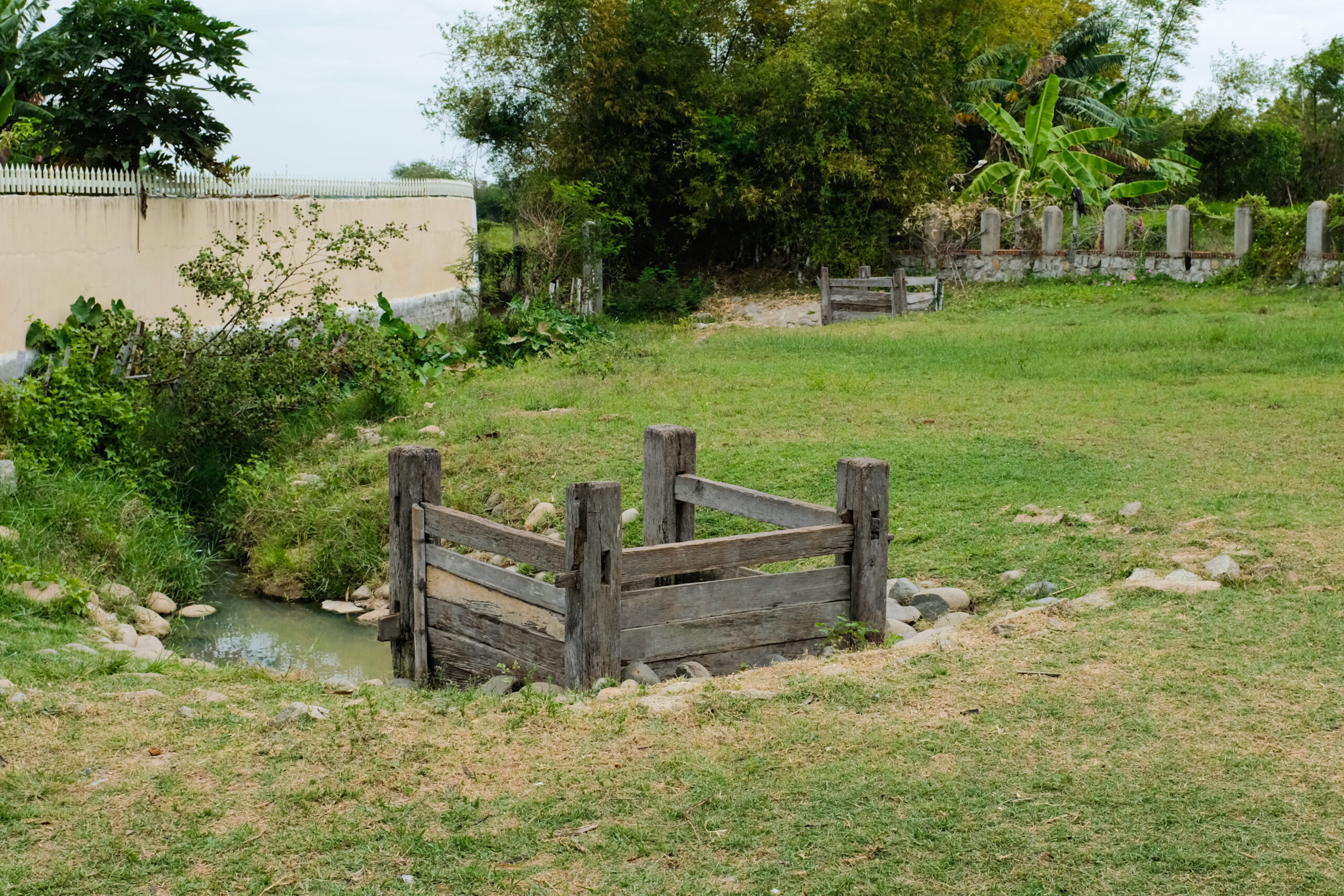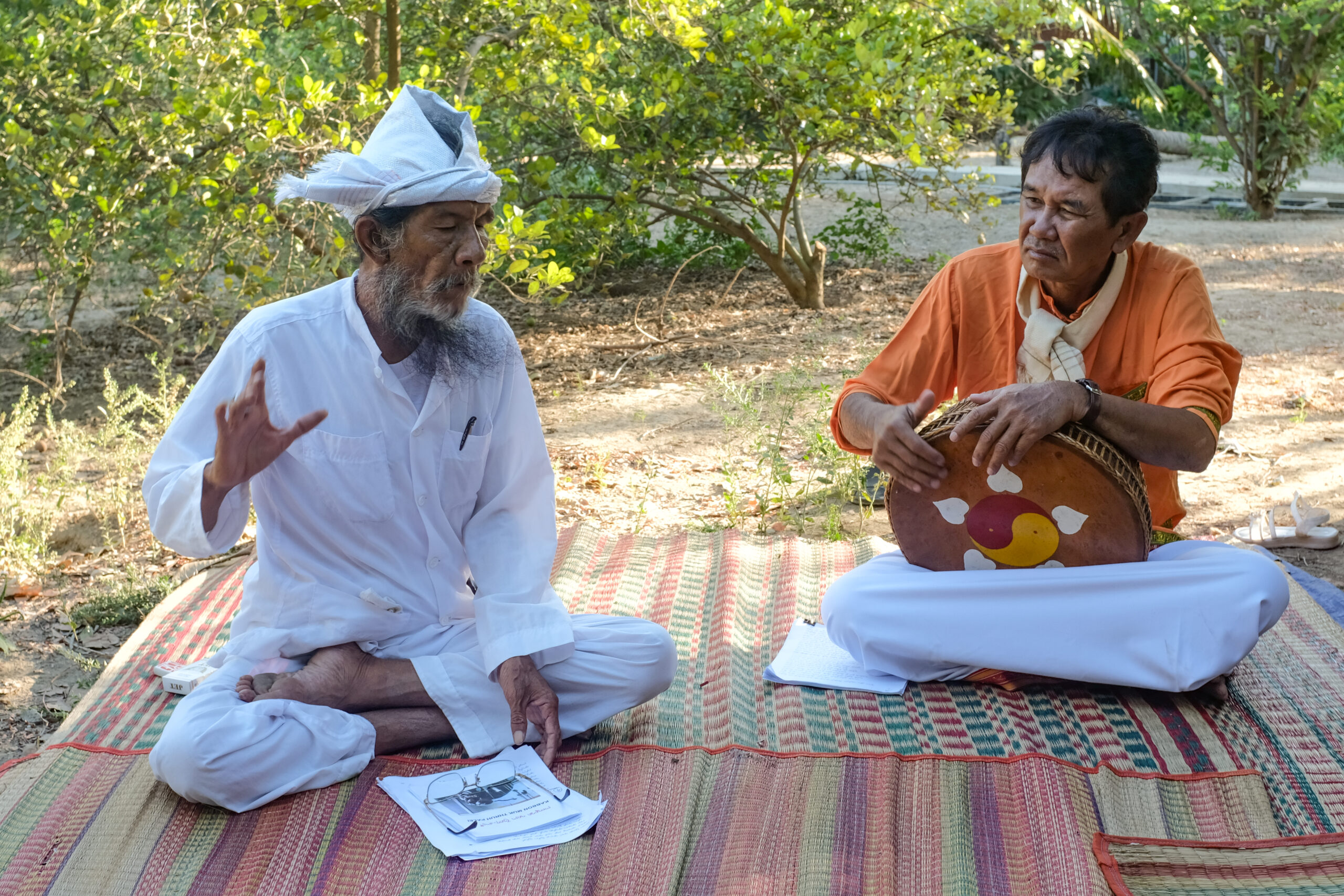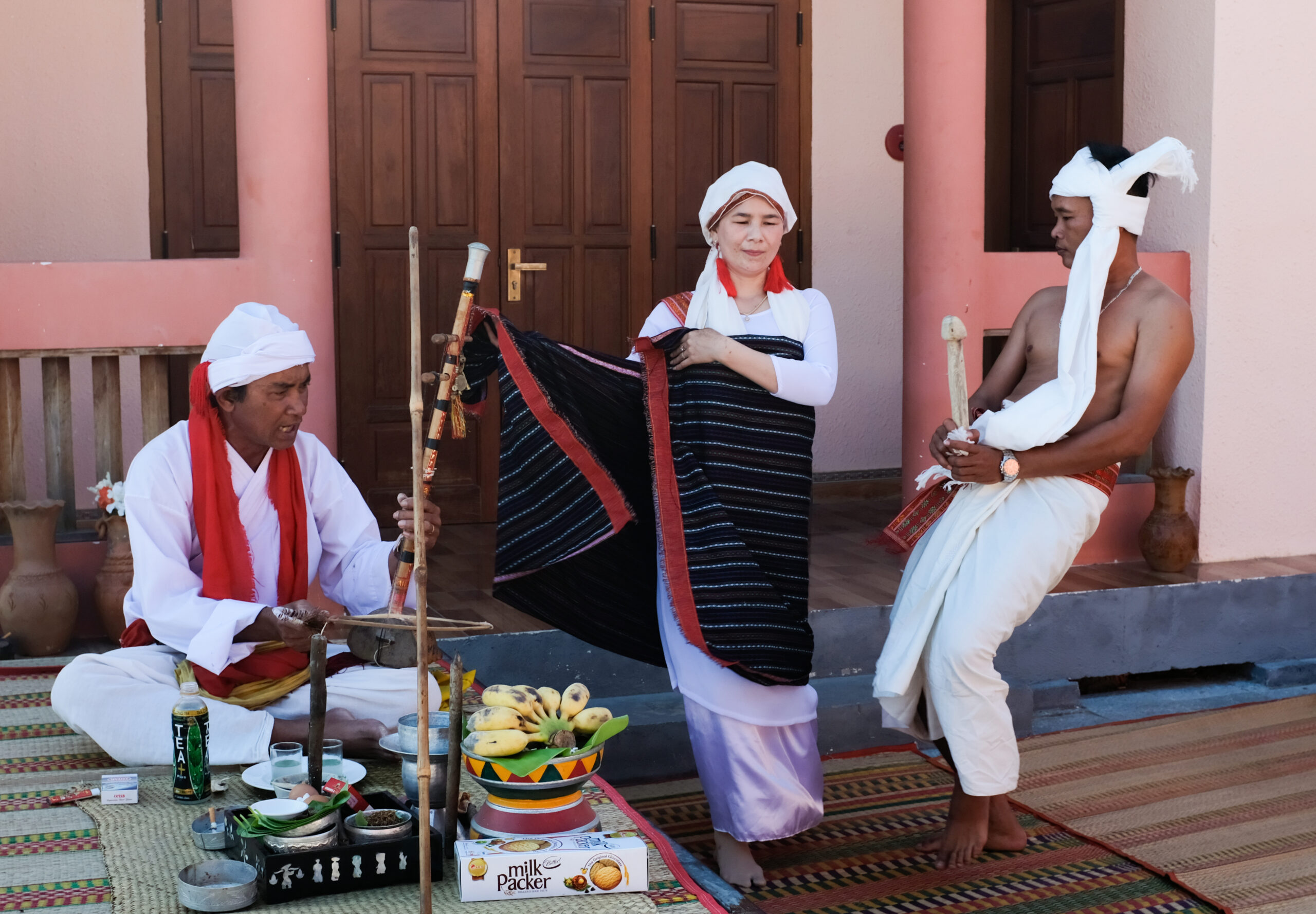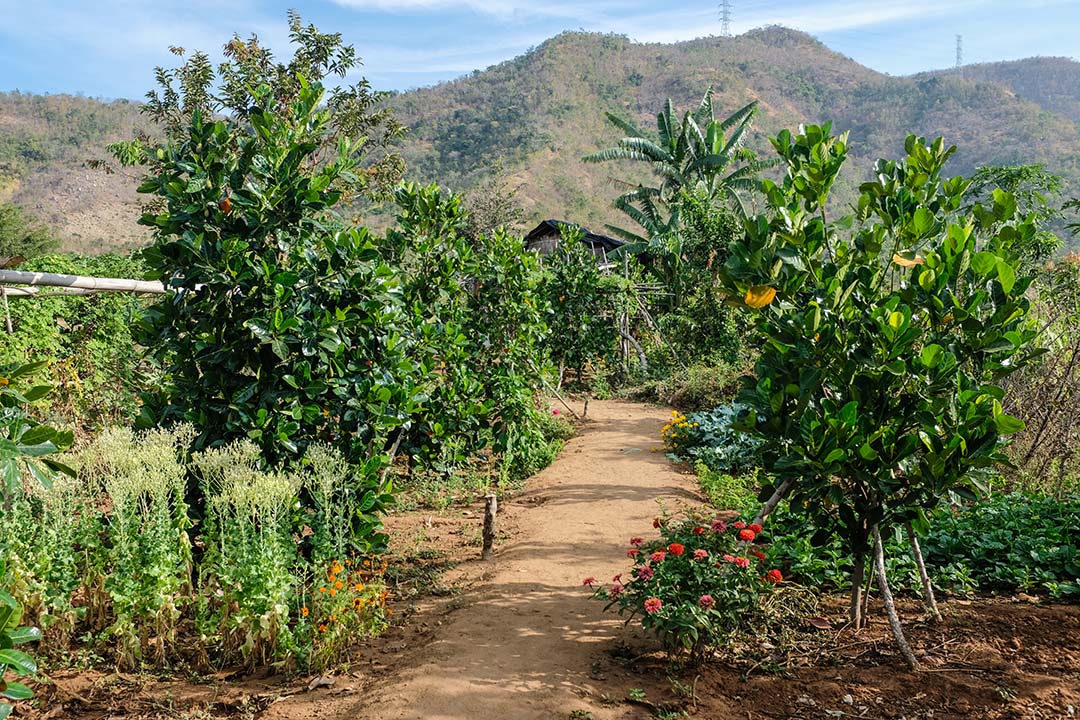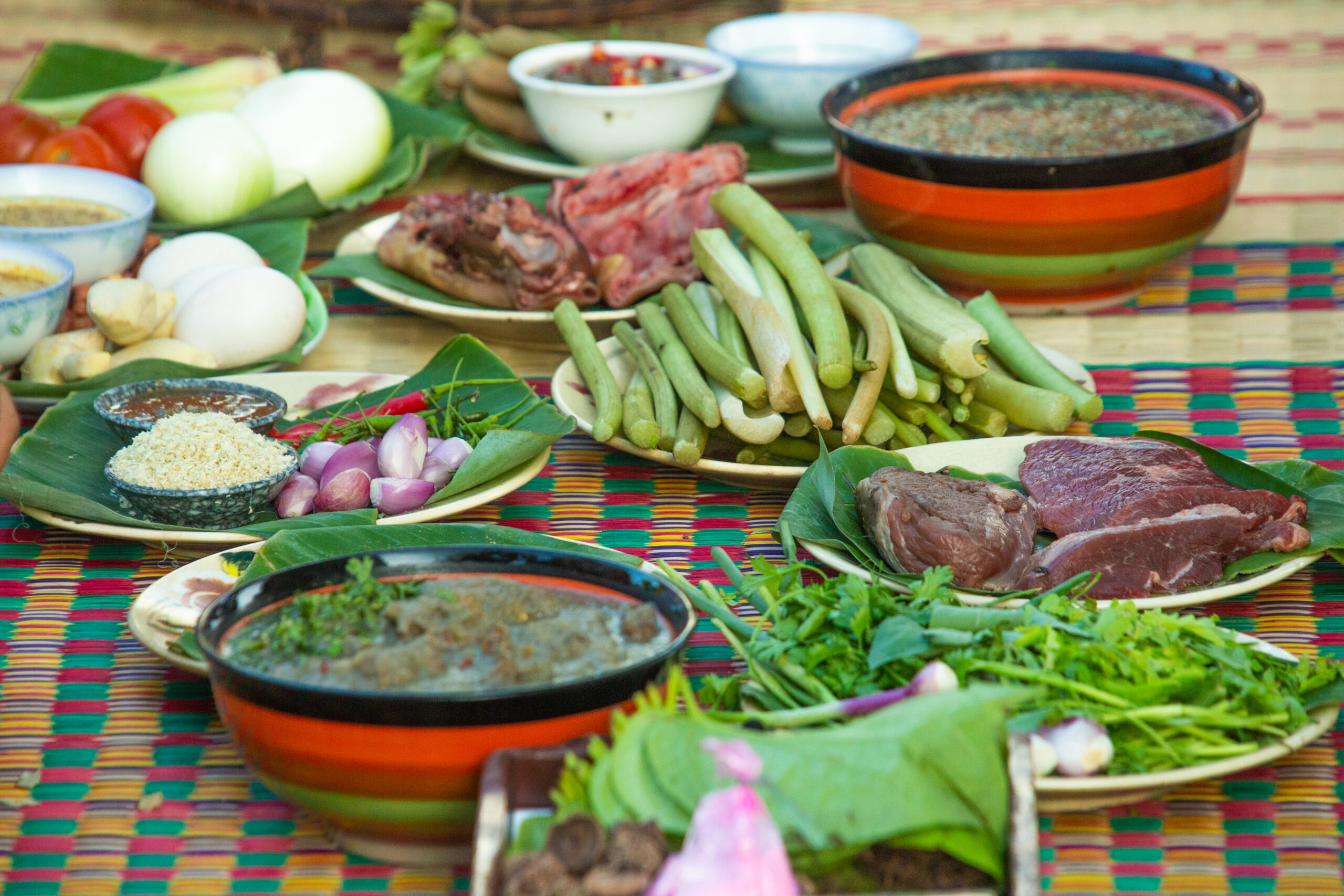When Islam (Islam) was introduced into the Cham community, the Cham people made many important changes to convert this religion into Bani religion. Cham people follow the Bani religion, also known as Cham Bani, turning the month of Ramadan into a festival RamuwanBesides worshiping Allah, we still keep the custom of worshiping our ancestors and some other gods. The Cham Bani people believe that, at birth, everyone is a Cham, but at a certain age, people must enter the Bani religion to become an official Cham Bani. That occasion of initiation is called the coming of age ceremony. Especially with the matriarchy, the coming-of-age ceremony of women is of special importance, affirming the girl's position in the community with the right to decide her own marriage. When Cham Bani girls are about to reach puberty, about 10-12 years old, their families will hold a ceremony Karoh, To be hair cutting ceremony, to mark this important milestone in life.
Ceremony Karoh It took place over three days, organized by a girl's family. At that time, the senior monks were invited to preside over the ceremony, representing the system of religious dignitaries. As for the community, the children are guided and closely watched by Muk Buh, was Mrs. Dam, an elderly woman of prestige in the village. Whether a family organizes the ceremony, Karoh will gather other girls of the same age and clan to perform in groups. Next to the girls when performing the ceremony, there must always be a boy as the role Po Ladhi, to balance masculinity – women in the ceremony.
Giving birth to a daughter is considered a blessing by the Cham people. The woman holds the land, wealth, property in the family, the man who gets married will go to his wife's house to stay. Children in the family follow their mother's last name. During the ceremony Karoh, girls are prepared with costumes and jewelry, learn to perform rituals in the traditional way, begin to feel their own social responsibility but at the same time are always observed and supported by friends and family. mothers in the family.
All information posted in the Connecting Heritage Digital Collection is contributed by the community and is for reference only. The Program is not responsible for any differences from the information stated in the Digital Collection and disclaims any liability arising from the use of information from this Collection. For more information, please visit Community Rules.


